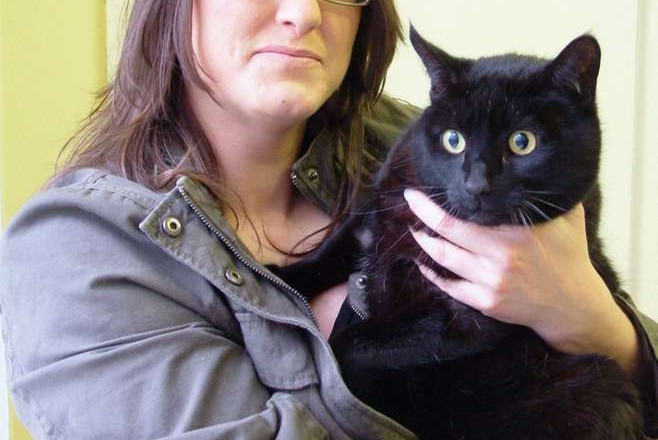
Cats are nimble and gymnastic creatures, jumping onto walls which look much too high to climb, and leaping across gaps which seem impossibly wide. They have an innate ability to judge distances and heights. They manage to propel their bodies almost magically from one point to another. Cats use these skills every day as they prowl around their own territory, hunting small prey, chasing other cats out of the way, and escaping from dogs that chase them out of the way.
Ed had always been as agile as any other cat, but recently, Naomi had noticed that he was not moving as gracefully as in the past. His back legs seemed to be less upright than before, and when he darted down the garden, his entire hindquarters swayed behind him unsteadily. The change in his mobility was subtle at first, but after a month, his condition was definitely deteriorating, and so she brought him in to see me. I carefully examined Ed all over.
There were no obvious abnormalities. All of his joints seemed normal, with no painful areas, no weak ligaments, and no evidence of muscle wasting. I then stood back, and allowed Ed to jump off the consulting table, and wander around the room. As he did this, it was clear that his back legs were just not working as they ought to do. He was not placing his feet as neatly and deliberately as a normal cat, and when he moved quickly, his hind-quarters swayed from side to side. Ed was suffering from a problem known as “hind limb ataxia”, or to put it more simply, his back legs were wobbly. A medical dictionary defines ataxia as “a failure to regulate the body’s posture and the strength and direction of limb movements.”
As I explained this to Naomi, she had two big questions for me: what was causing this to happen to Ed, and what could I do to make him better? It was impossible to give her any answers without doing a workup, so Ed was admitted to our hospital for x-ray pictures and blood tests.
When Naomi came back that evening to collect Ed, I explained what I had discovered. Ed’s blood tests had all been normal, proving that his internal metabolism was functioning perfectly. Sometimes wobbly hind legs can be caused by internal medical problems, like liver disease or diabetes, but this was not the case with Ed. There was something else going on that only affected his back legs. The x-ray pictures were next. I had taken different views of Ed’s spine and pelvis, so that the bones and other structures in this area could be seen from different angles. Nearly everything looked completely normal, but there was one area that concerned me.
The “lumbosacral junction”, which is the point at which the lower spine connects with the pelvis, had a spur of newly formed bone protruding in an unusual way. This suggested that poor Ed must have had an accident at some stage, and he had traumatised the lower end of his back. The new bone that had formed was the body’s way of trying to heal the damage.
The accident could have happened in various ways – he could have fallen off a wall or out of a tree, he could have been kicked by an unfriendly passer-by, or he could even have been tipped by a car. It seemed that the injury itself had not caused any serious damage, and the problem was being caused by the way his body was reacting to the injury. The spur of bone was pressing on his lower spinal cord, preventing nerve impulses from flowing up and down.
If Ed could have talked, he would have said that his toes felt a bit numb, and that he was unable to stop his legs from wobbling when he was moving quickly. It would be interesting to go to the next stage of an investigation of his problem, which would involve a detailed MRI scan of Ed’s lower back, but I already had enough information to give him the treatment that he needed. If he does not respond well to this, extra tests, including MRI scans, will be the next stage.
Ed has been sent home on a course of anti-inflammatory steroids, to ease the pressure caused by the spur of bone on his spinal cord. He has also been instructed to “rest”, although cats are notorious for disobeying such advice. Ten days later, Ed seems to have improved, and he is already climbing trees and jumping up walls with no problem. Hopefully, the improvement will continue, and his Conga sway will soon be a thing of the past.
Tips
- Wobbly hind legs can develop for many different reasons
- Blood tests and x-rays are usually needed to find out what is going on
- Often simple treatment is enough, but further work, including MRI scans, are sometimes needed




Comments are closed.
Please note that I am unable to answer veterinary questions in comments. If you have questions or concerns about your pet's health it is always better to contact your vet.